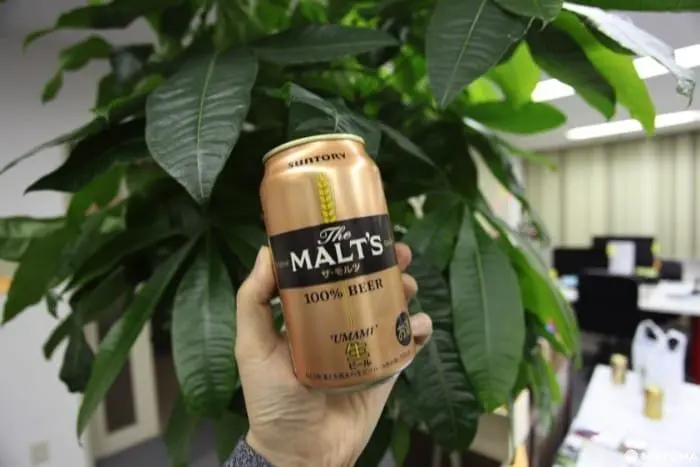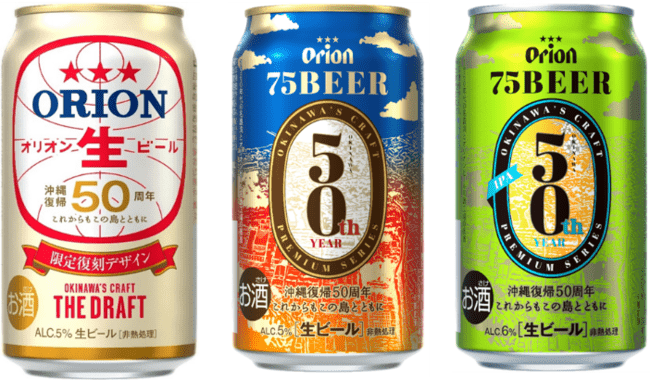What’s in That Can? A Tasting Guide to Japanese Beers

This article is a tasting guide to the following Japanese beers and a comparison of these various brews: Asahi Super Dry, Kirin, Sapporo Black Label, Suntory Premium Malt's, Yebisu, and Orion Beer.
In Japan, there is a myriad of alcoholic beverages sold at supermarkets and convenience stores. There is also a vast selection from normal and low-malt beer to chuhai (canned cocktails), wine, and shochu liquor. But, of course, your gaze still lands on the beer cans first. Japan has several canned beer brands, each with unique taste and characteristics.
In addition, izakayas (Japanese pubs) will generally have several brands on the menu, so you can use this tasting guide to learn about some different beers in advance.
Asahi Beer

Released in 1987 as Japan's first karakuchi (*1) beer, Asahi sparked a revolution in the world of Japanese beer. It has a crisp flavor that is free from strange aftertastes but still possesses kire (*2). Asahi is accurately represented by its brand slogan being "a sophisticated, clear, crisp" beverage.
*1 Karakuchi: dry-tasting beer that contains very little sugar. When malt is used during the beer-making process, some sugar is left behind as a byproduct.
*2 Kire: a sharp-tasting beer with minimal aroma. A typical beer has an aftertaste that lingers on the tongue for a while. However, this beer has a short aftertaste with a signature sharpness.
Suntory

Suntory is the revolutionary brewer of "The Premium Malts," which established Japan's premium beer status. It is strictly made with high-quality ingredients, including aromatic hops, two-row barley, diamond malt, and natural water. When drinking this beverage, you can enjoy a deep, rich flavor and splendid aroma.
This is a popular product being the longest-selling beer on the Japanese market. By replicating manufacturing methods from Germany, the birthplace of beer, "The Premium Malts" has depth and natural sweetness only made possible from 100% malt.
Sapporo Beer

Sapporo Beer started in 1876 at a brewery in Sapporo City, Hokkaido Prefecture. With the belief in "brewing beer with the best ingredients," this beverage manufacturer was passionate about sourcing the finest materials to cultivating its barley and hops from scratch.

Sapporo Breweries' Beer Black Label is the company's flagship product. With a refreshing taste and uniquely cultivated, long-lasting flavor, you can enjoy the holy trinity of beer: sharpness, richness, and bitterness.
Kirin Beer

Kirin Beer is a world-renowned brewery in Japan. It has a history dating back to the Meiji Era. With its long-standing lager beer and classic lager recipes, Kirin is highly regarded worldwide. Kirin's "Ichiban Shibori" is also famous overseas.
It has a balanced and refreshing taste while still retaining the bitterness typical of Kirin Beer. This beverage pairs well with any meal, so why not choose Kirin to bring cheers to the dinner table?
Yebisu Beer

Although Yebisu Beer was established in 1887, the outbreak of World War II forced it to shut down temporarily. The company was later revived in 1971 and continues producing 100% malt beer with high-quality ingredients. Yebisu Beer has a rich hop flavor that is smooth on the palate with a solid bitterness.
Orion Beer

Orion Beer got its start in July 1960. The company has continued to brew beer suitable to the climate of Okinawa, the southernmost island prefecture of Japan. Only a few stores outside Okinawa carry this beer, so pick one up if you see one!
In Conclusion
There are many delicious Japanese beers that are exclusively sold locally. Likewise, some brews are hard to find due to their small distribution. Additionally, you can discover beers that use rice, smoked barley, tangerines, and even miso in the recipe.
We recommend tasting some well-known Japanese beers first, then enjoying what the rest of the Japanese beer world has to offer.
Photos courtesy of PR TIMES
Hello, I'm Keisuke. living Asakusa Tokyo Japan. Love triathlon(Ironman), traveling, reading, eating and my job. I really really like Japan but I think Japan should be more kindly to traveler. https://www.facebook.com/keisukeyamada84





































![[Coupon Available] Attention Overseas Winter Sports Fans! Nagano's Sports Depot Has Evolved](https://resources.matcha-jp.com/resize/720x2000/2026/01/05-254819.webp)
![[2 hours from Tokyo ] 10 Quiet and Breathtaking Views of Mount Fuji in Yamanashi Hokuto City , Yamanashi - Part 2](https://resources.matcha-jp.com/resize/720x2000/2025/12/16-253037.webp)
